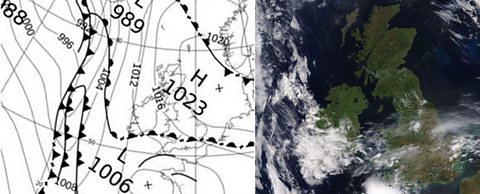What is extreme weather?
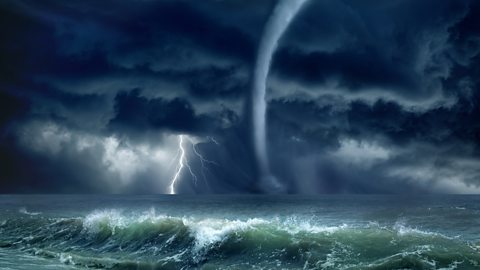
Extreme weather is when a weather event is significantly different from the average or usual weather pattern.
This may take place over one day or a period of time.
Three of the best examples of extreme weather are tornadoFast rotating winds that can cause a lot of damage., droughtA long period of low rainfall that creates a major shortage of water. and hurricanes.
Hurricanes
The strongest tropical storms are called hurricanes, typhoons or tropical cyclones.
The different names all mean the same thing, but are used in different parts of the world.
If these huge storms start in the Atlantic, off the west coast of Africa, they are called hurricanes.
In an average year, over a dozen hurricanes form over the Atlantic Ocean and head westwards towards the Caribbean, the east coast of Central America and the southern USA (Florida in particular).
Hurricanes may last as long as a month and travel very slowly, usually at about 15mph, spiralling.
A tropical storm becomes a hurricane when the spiralling surface winds reach 75mph (120kmph) and it is known as a Category 1 hurricane. The most powerful hurricane category is Category 5, when surface winds exceed 150mph (240kmph).
Impact on people and property
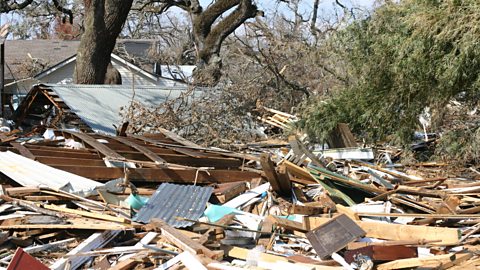
The intense winds of tropical storms can destroy whole communities, buildings and communication networks.
As well as their own destructive energy, the winds generate abnormally high waves and tidal surges.
Sometimes the most destructive elements of a storm are the subsequent high seas and flooding.
MEDCMore Economically Developed Country ÔÇô usually a rich country found in Western Europe or North America. are better placed to reduce the effects of tropical storms because they have more financial, educational and technological resources to help deal with them.
They better able to observe and predict storm behaviour and can invest in infrastructure to withstand storms - as well as spending more money on repairing the damage caused.
The main hazards that a hurricane can bring are:
Storm surge: this is a rise in the sea levels as the high winds push the sea up and towards the coastline. This will cause extensive flooding to lowland areas which can cause damage to property and kill people.
Flooding: intense rain can also cause damage to property and crops in the fields. Heavy rain can cause inland flooding.
High wind speedThis is a measurement of the speed that the wind is moving in. It is usually measured by an anemometer and can be measured in knots or through the use of the beaufort scale. can also cause devastation to homes, buildings, property and local infrastructure.
Case study: Hurricane Sandy (2012)
This hurricane event, sometimes known as Superstorm Sandy, impacted eight countries including Jamaica and the USA.
Sandy was a Category 3 Hurricane, that grew to be the largest Atlantic hurricane ever recorded, measuring 1800km in diameter.
Impacts
| Impact on People | Impact on Property |
|---|---|
| Power cuts for 70% of ┤│▓╣│¥▓╣¥▒│ª▓╣ÔÇÖs population. | In Jamaica 15 000 homes were destroyed, many in the poorest shanty towns. |
| In New York, USA 375 000 people were evacuated from low lying coasts at risk of flood. | The total damage costs exceeded $70 billion. |
| Damage prevented 1.1 million New York schoolchildren attending school for a week. | On the island of Cuba, the total damage cost was US$2 billion. |
| Two of the 233 deaths caused by Sandy were in Bermuda. | In Haiti 200 000 people lost their homes. |
| One million people faced food storages in Haiti. | The storm surge flooded New York streets, tunnels and the subway. |
| In the USA 20 000 flights had to be cancelled. |
More on Weather and climate
Find out more by working through a topic
- count1 of 4
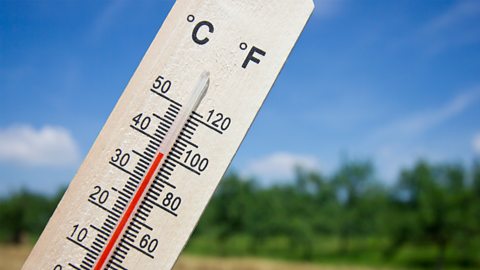
- count2 of 4
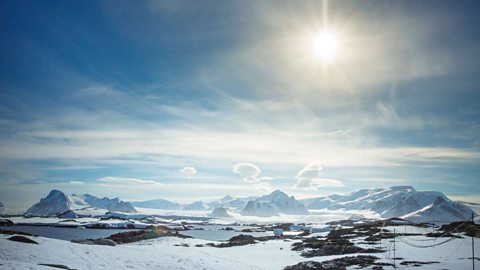
- count3 of 4
